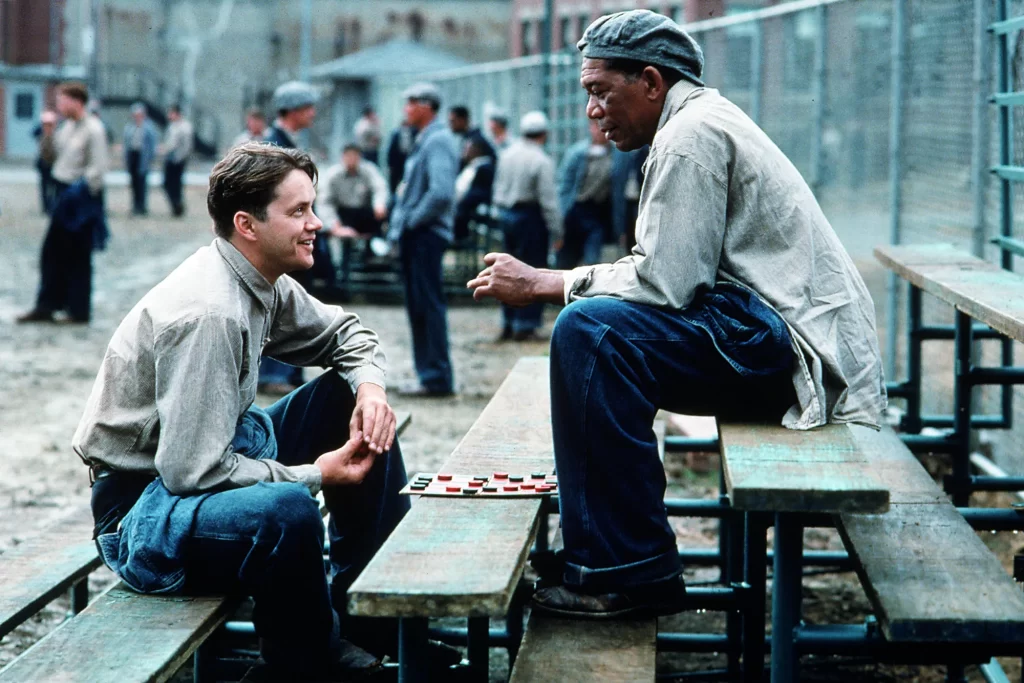‘It tanked at the box office’: Frank Darabont and Morgan Freeman on The Shawshank Redemption’s path from flop to classic
3 min read

When The Shawshank Redemption debuted 30 years ago, it appeared poised for success. Adapted from a Stephen King novella, the film featured an acclaimed cast and a compelling story about hope and friendship within the harsh confines of a prison. Yet, upon its release in 1994, it struggled to find its audience, ultimately failing to recoup its modest $25 million budget.
Frank Darabont, the film’s director and screenwriter, recognized the potential of King’s story early on. After purchasing the rights in 1987, he was drawn to its emotional depth and resilience. “I found the story so compelling and touching that it felt natural as a movie,” he later shared in an interview. The narrative follows Andy Dufresne, a man wrongfully convicted of murdering his wife and her lover, and his profound friendship with fellow inmate Ellis “Red” Redding, portrayed by Morgan Freeman.
To capture the film’s oppressive atmosphere, Darabont chose the Ohio State Reformatory as the filming location. Opened in 1896, the now-closed prison had a reputation for inhumane treatment, which added authenticity to the film’s dark tone. Darabont described the setting as imbued with “foreboding and despair,” a feeling shared by the entire cast and crew during production.
The film’s casting was another strong point, featuring Tim Robbins as Dufresne and Freeman as Red. Both actors had impressive resumes; Robbins had recently earned Golden Globe nominations, and Freeman was an established star with two Oscar nominations. Anticipation was high following successful test screenings that produced enthusiastic audience reactions.
However, when The Shawshank Redemption premiered in September 1994, it encountered fierce competition. Released alongside blockbuster hits like Forrest Gump and Pulp Fiction, it struggled to stand out. Freeman reflected on this disappointment, noting that the film “tanked at the box office.” With ticket sales totaling only $16 million, the initial response was disheartening, especially as Forrest Gump swept the Oscars that year, winning six awards.
Freeman attributed some of the film’s lack of initial success to its title, which proved difficult for audiences to remember and discuss. “If you can’t get the word across, then it just doesn’t do well,” he explained, recalling amusing instances where people confused the film’s name.
Despite its rocky start, The Shawshank Redemption found a second life in the home-video market. By 1995, it had become the most rented film on VHS, with audiences embracing its themes of resilience and hope. Darabont noted the impact of word-of-mouth recommendations, which helped the film gain traction over time. Frequent airings on cable television further solidified its status, leading to a growing appreciation among viewers who missed its theatrical release.
By the early 2000s, The Shawshank Redemption was consistently ranked among the greatest films ever made. It topped lists, including being named the “best film never to have won an Oscar” in a BBC poll. The film’s enduring legacy was underscored by its position at the top of IMDb’s list of the best films, a remarkable turnaround from its initial failure.
Fans and critics began to explore the film’s deeper meanings, sparking discussions around its themes and symbolism. Some viewed it as a religious allegory, interpreting Andy Dufresne’s character as a Christ-like figure. While Darabont acknowledged these readings, he emphasized that such interpretations were not his primary intention during the filmmaking process.
In 2015, The Shawshank Redemption received a significant accolade when it was added to the US National Film Registry, recognizing its cultural and historical significance. Darabont expressed gratitude to those who championed the film, acknowledging the role of its dedicated fanbase in keeping its story alive.
Today, The Shawshank Redemption stands as a testament to the power of storytelling and the enduring human spirit. Its transformation from a box office disappointment to a celebrated classic illustrates how audiences can ultimately embrace a narrative that speaks to universal themes of hope, friendship, and resilience, ensuring its place in cinematic history.